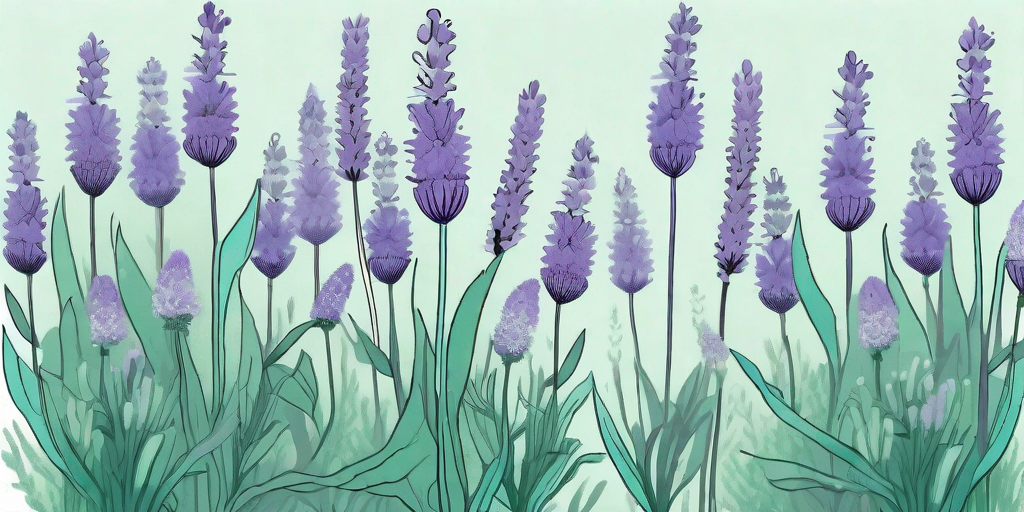
Lavender, with its intoxicating scent and stunning purple blooms, is a gardener's dream. But, like any plant, it needs a little TLC to truly thrive. That's where lavender fertilizer comes in. This secret weapon can transform your lavender from lackluster to lush. But how do you use it? And what else do you need to know to grow lavender like a pro? Buckle up, green thumbs, because we're about to dive in.
The Magic of Lavender Fertilizer
Let's start with the star of the show: lavender fertilizer. This isn't just any old plant food. It's a specially formulated concoction designed to give lavender exactly what it needs to produce those gorgeous, fragrant blooms. And trust us, once you've seen what it can do, you'll never go back to regular fertilizer again.
But what makes lavender fertilizer so special? It's all about the nutrients. Lavender needs a specific balance of nitrogen, phosphorus, and potassium to grow strong and healthy. Too much nitrogen, and you'll get lots of leafy growth but few flowers. Too little phosphorus, and your lavender may struggle to produce those beautiful purple blooms. And without enough potassium, your plant's overall health could suffer.
Choosing the Right Lavender Fertilizer
Not all lavender fertilizers are created equal. Some are better suited to certain types of lavender, or to specific growing conditions. So how do you choose the right one? Start by looking at the N-P-K ratio on the label. This tells you how much nitrogen (N), phosphorus (P), and potassium (K) the fertilizer contains. For lavender, you want a fertilizer with a low nitrogen content and higher levels of phosphorus and potassium.
Also consider the form of the fertilizer. Some come as granules that you sprinkle around the base of the plant, while others are liquid that you mix with water and apply to the soil. Each has its pros and cons, so choose the one that best fits your gardening style.
How to Use Lavender Fertilizer
Now that you've got your lavender fertilizer, it's time to put it to work. But before you start sprinkling or spraying, there are a few things you need to know. First, less is more when it comes to feeding lavender. This plant is native to the Mediterranean region, where the soil is often poor and rocky. That means it's adapted to getting by with less, and can actually suffer if over-fertilized.
So how much should you use? A good rule of thumb is to apply a small handful of granular fertilizer or a few capfuls of liquid fertilizer per plant in the spring, just as new growth is starting to appear. Then repeat the application in early summer to give your lavender a mid-season boost.
When applying the fertilizer, be sure to spread it evenly around the base of the plant, avoiding the foliage. Then water thoroughly to help the nutrients soak into the soil.
Other Tips for Growing Lush Lavender
While lavender fertilizer is a game-changer, it's not the only thing your plants need to thrive. Here are a few more tips to help you grow lavender like a pro.
Choose the Right Variety
There are dozens of varieties of lavender out there, each with its own growth habits and care requirements. Some, like English lavender, are hardy and can tolerate colder climates. Others, like French lavender, prefer warmer temperatures and may need to be brought indoors in winter. Choose the variety that's best suited to your climate and growing conditions for the best results.
Give it Plenty of Sun
Lavender loves the sun. It needs at least six hours of direct sunlight each day to grow strong and produce plenty of blooms. So be sure to plant your lavender in a sunny spot, and avoid shady areas or places where other plants might block the light.
Don't Overwater
Remember, lavender is native to a region with dry, rocky soil. That means it's adapted to survive with less water, and can actually suffer from root rot if overwatered. So be sure to let the soil dry out between waterings, and avoid planting your lavender in areas where water tends to pool.
FAQs
Can I use regular fertilizer for my lavender?
While you can use regular fertilizer, lavender-specific fertilizer is better suited to meet the plant's unique nutrient needs. Regular fertilizer often contains too much nitrogen, which can lead to excessive leafy growth at the expense of blooms.
How often should I fertilize my lavender?
Generally, you should fertilize your lavender twice a year: once in the spring as new growth appears, and again in early summer for a mid-season boost. However, this can vary depending on your specific growing conditions.
Can I over-fertilize my lavender?
Yes, over-fertilizing can harm your lavender. Too much fertilizer can lead to excessive leafy growth, fewer blooms, and even root damage. Remember, less is more when it comes to feeding lavender.
Conclusion
With the right fertilizer and a little know-how, you can grow lavender like a pro. So why not give it a try? Your garden (and your nose) will thank you. And who knows? You might just find that growing lush, fragrant lavender is your new favorite hobby.











